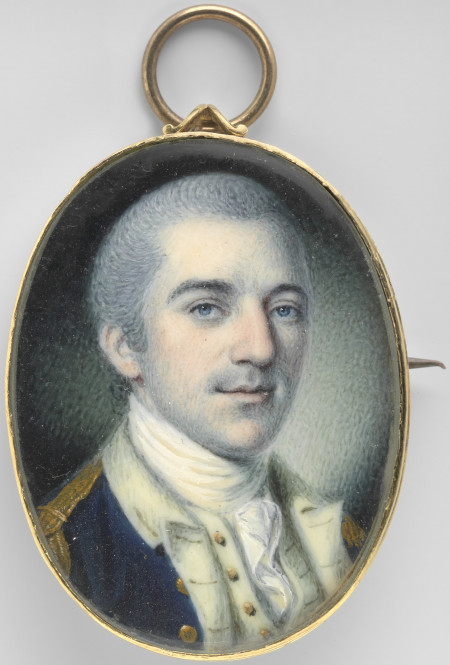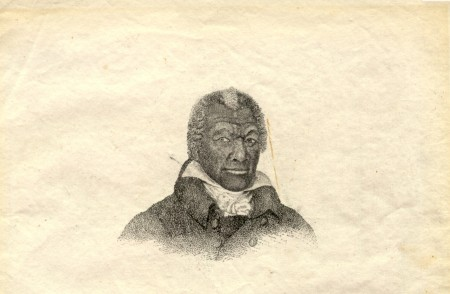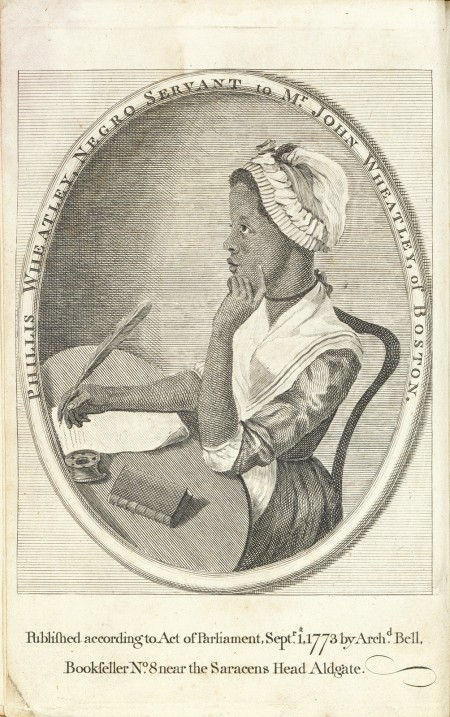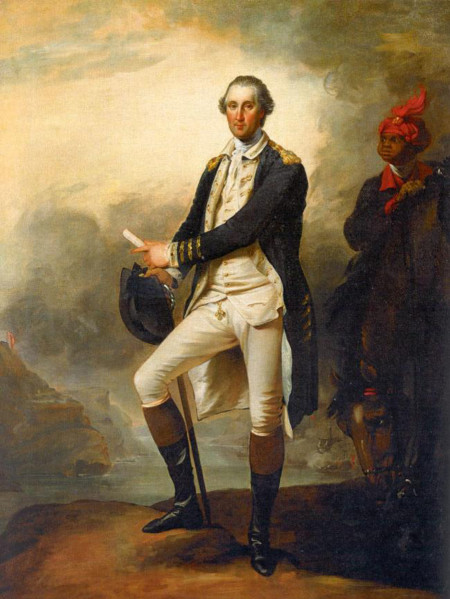George Washington began questioning slavery during the Revolutionary War, when he led the North American colonies’ battle for independence from Great Britain.
I never mean (unless some particular circumstance should compel me to it) to possess another slave by purchase: it being among my first wishes to see some plan adopted by the legislature by which slavery in the Country may be abolished by slow, sure, & imperceptible degrees.
-GEORGE WASHINGTON, 1786
When he drafted his will at age 67, George Washington included a provision that would free the 123 enslaved people he owned outright. This bold decision marked the culmination of two decades of introspection and inner conflict for Washington, as his views on slavery changed gradually but dramatically.
As a young Virginia planter, Washington accepted slavery without apparent concern. But after the Revolutionary War, he began to feel burdened by his personal entanglement with slavery and uneasy about slavery’s effect on the nation. Throughout the 1780s and 1790s, Washington stated privately that he no longer wanted to be a slaveowner, that he did not want to buy and sell slaves or separate enslaved families, and that he supported a plan for gradual abolition in the United States.
Yet, Washington did not always act on his antislavery principles. He avoided the issue publicly, believing that bitter debates over slavery could tear apart the fragile nation. Concerns about his finances, separating enslaved families, and his political influence as president led him to delay major action during his lifetime. Ultimately, Washington made his most public antislavery statement after his death in December 1799, when the contents of his will were revealed.
"I wish to get quit of negroes."
-George Washington, 1778
George Washington first stated concerns about slavery in economic terms. Later, he added moral objections. Although Washington never identified his influences, many factors likely shaped his increasingly negative views of slavery.
Plantation Profits
George Washington first stated concerns about slavery in economic terms.
...half the workers I keep on this Estate, would render me greater net profit than I now derive from the whole...
-George Washington, 1799
Washington found slavery economically inefficient. In the last decades of his life, the profits from his farmland did not cover the cost of feeding and clothing the estate’s enslaved people. By the 1770s, Washington began to realize that slavery was not an efficient labor system for Mount Vernon. After switching his plantation’s focus from tobacco to less labor-intensive grains, Washington had far more enslaved workers than he needed. He was losing money. By 1799, he lamented, "I have more working Negros by a full moiety [half], than can be employed to any advantage in the farming System."
The Spirit of Liberty
Later, George Washington added moral objections.
We hold these truths to be self-evident, that all men are created equal…
-Declaration of Independence, 1776
During the American Revolution, antislavery sentiment expanded throughout the Atlantic world. Some abolitionists were influenced by Enlightenment theories promoting liberty and equality, others by religious convictions. In 1782, a new Virginia law loosened restrictions on freeing slaves, prompting a surge of manumissions by the state’s slaveholders.
Between 1780 and 1800, Virginia’s free black population rose from about 3,000 to more than 20,000. Washington did not free his slaves until after his death, but the era’s rhetoric of liberty and equality may have sparked his moral qualms about slavery.
In private, he hoped for legislation that would gradually end slavery. As a political figure, however, Washington prioritized national unity over the abolition of slavery.
There is not a man living who wishes more sincerely than I do, to see a plan adopted for this abolition of [slavery] but there is only one proper and effectual mode by which it can be accomplished, & that is by Legislative authority.
-George Washington, 1786
Abolitionist Associates
We have sunk the Africans & their descendants below the Standard of Humanity…
-John Laurens, 1776
Members of Washington’s wartime staff may have inspired antislavery sentiments. His young aides John Laurens and the Marquis de Lafayette both opposed slavery. After the war, Lafayette asked Washington to join him in purchasing a Caribbean plantation and freeing its slaves. Washington declined, but he praised the idea as “evidence of the benevolence of your heart.”
John Laurens developed a plan to recruit and eventually free a regiment of slaves in his home state of South Carolina. Washington approved of the idea, but the state legislature rejected it, fearing it could lead to a slave rebellion.
Washington also explored ways to reduce the number of enslaved people at Mount Vernon without selling them. Most ideas involved renting or selling land to finance an emancipation. He was unable to execute any of these plans during his lifetime.
Were it not then, that I am principled against selling negroes, as you would do cattle in the market, I would not, in twelve months from this date, be possessed of one, as a slave.
-GEORGE WASHINGTON, 1794
African American Soldiers
I do herby…declare all indented servants, Negroes, or others, (appertaining to Rebels,) free, that are able and willing to bear arms, they joining His Majesty’s Troops…
- Lord Dunmore’s Proclamation, 1775
Washington initially opposed allowing free or enslaved African Americans to fight in the Revolutionary War. He changed his mind when the British began offering freedom to slaves who fought against their patriot owners. Ultimately, Washington saw an estimated 5,000 black soldiers—free and enslaved—fight for the colonies (more than 80,000 slaves fled to the British).
James Fayette worked as a spy for the Continental Army. Posing as a runaway, the enslaved man infiltrated British camps and gained valuable intelligence. Fayette was freed after the war, but many other enslaved soldiers were not.
A Talented Poet
A crown, a mansion, and a throne that shine, With gold unfading, WASHINGTON! Be thine.
-Phillis Wheatley, 1775
In the fall of 1775 Phillis Wheatley, a 22-year-old African American woman living in Boston, sent Washington a poem celebrating his leadership and accomplishments. The general responded with praise for her “great poetical Talents” and invited her to visit his headquarters in Cambridge, Massachusetts. Perhaps inspired by Wheatley, Washington later urged education for former slaves.
Wheatley was illustrated in her book Poems on Various Subjects, Religious and Moral, which was published in London in 1773 while she was still enslaved.
George Washington and William Lee
And to my Mulatto man William (calling himself William Lee) I give immediate freedom…this I give him as a testimony of my sense of his attachment to me, and for his faithful services during the Revolutionary War.
-George Washington’s Will, 1799
As George Washington’s enslaved valet, William Lee rode beside the general and was responsible for his personal gear and camp equipment throughout the American Revolution. The two men developed a close relationship, and in 1799, Lee became the only enslaved person freed immediately by Washington’s will.
George Washington by John Trumbull, 1780
The background of John Trumbull’s 1780 portrait of George Washington features an enslaved man, likely meant to represent William Lee. Trumbull served as one of Washington’s military aids and would have been familiar with the close relationship between the general and his valet. By painting Lee in a feathered turban-unlikely headwear for a Virginian-Trumbull followed an artistic tradition of depicting black people as “exotic” or foreign-looking.
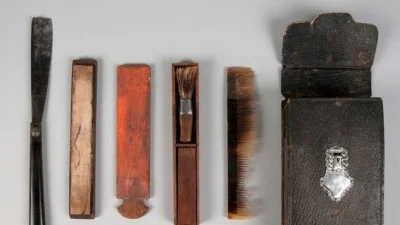
Razor case
A traveling razor case allowed Washington to maintain his grooming habits while in camp. Although Washington shaved himself, Lee organized his belongings, laid out clothes, and combed the general’s hair into its trademark queue, or ponytail.

Pounce box
Lee also looked after the voluminous collection of correspondence that Washington wrote and received. A pounce box expelled a fine powder that helped the ink on his letters dry faster.
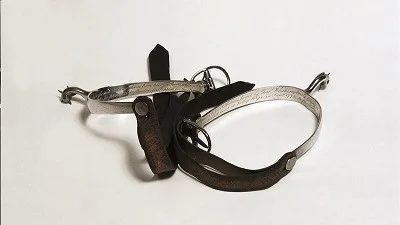
Pair of spurs
Washington and Lee were known as excellent riders. They used spurs to urge on their horses in battle and on long rides between engagements.
What did Washington think about slavery after the American Revolution?
He found slavery economically inefficient.
In the last decades of Washington’s life, the profits from his farmland did not cover the cost of feeding and clothing the estate’s enslaved people.
half the workers I keep on this Estate, would render me greater net profit than I now derive from the whole
-George Washington, 1799He opposed buying or selling slaves.
In the 1780s and 1790s, Washington reduced his transactions involving enslaved people, though he did not entirely eliminate such dealings.
I am principled against this kind of traffic in the human species.
-George Washington, 1799He explored ways to reduce the number of enslaved people at Mount Vernon without selling them.
Most ideas involved renting or selling land to finance an emancipation. He was unable to execute any of these plans during his lifetime.
Were it not then, that I am principled against selling negroes, as you would do cattle in the market, I would not, in twelve months from this date, be possessed of one, as a slave.
-George Washington, 1794He hoped to avoid separating enslaved families.
Washington acknowledged the importance of family to enslaved people. He knew that emancipating his own slaves would divide families because many had married Custis slaves, whom Washington did not have the legal authority to free.
It is much against my inclination…to hurt the feelings of those unhappy people by a separation of man and wife, or of families.
-George Washington, 1786In private, he hoped for legislation that would gradually end slavery.
As a political figure, however, Washington prioritized national unity over the abolition of slavery.
There is not a man living who wishes more sincerely than I do, to see a plan adopted for this abolition of [slavery] but there is only one proper and effectual mode by which it can be accomplished, & that is by Legislative authority.
-George Washington, 1786George Washington's Will
In his will, Washington left directions for the emancipation of all the slaves that he owned, after the death of Martha Washington.
Learn more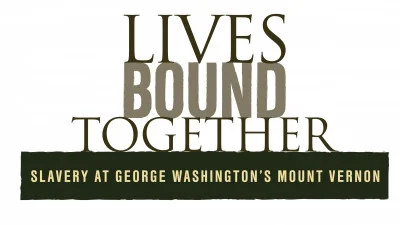
The content on this page was adapted from Lives Bound Together: Slavery at George Washington’s Mount Vernon, an exhibition on view from 2016–2020.
In 2025, Mount Vernon opened a reimagined version of the Lives Bound Together exhibition within the historic greenhouse quarters.
